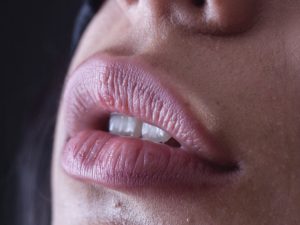Are Pore Strips Really Effective?
Many people use pore strips to remove buildup and unclog pores. They are most commonly used for the nose but also come in shapes suitable for the chin, cheeks, or forehead. Are they effective, or are there better ways to get clearer skin and smaller pores?

Keep reading to find out everything you need to know about pore strips, including whether they work or not, benefits, risks, and what you can use instead of them.
What are Pore Strips
Pore strips are a skin care product that can absorb oil. They are woven with an adhesive that activates when wet and can help remove buildup in pores once they dry and peel off. Do pore strips actually work?
Benefits & Risks of Pore Strips
There are some benefits to using them. They offer immediate results as they remove the build-up of oil, dead skin, or even small hair. Pore strips can work well when they are used infrequently, about every month or two. Best of all, pore strips tend to be very economical, and can provide a deep clean easily and quickly.
However, there are some negatives to pore strips. Sometimes, they can irritate the skin due to its drying nature. Some ingredients in pore strips, such as witch hazel or fragrance, may even cause further irritation and lead to inflammation. Inflammation is detrimental to skin health as it compromises the skin barrier. All of these factors may work towards these strips leading to hyperpigmentation, or skin darkening. This is particularly the case if individuals have sensitive skin or are unused to the dryness caused by pore strips.
What Skincare Products to Use Instead
Prevention and treatment are key when it comes to the pores of the nose for individuals who are prone to build up. This can be due to sebaceous filaments that can clog easily due to excess dead skin cells, sebum, or genetics. Lucky for us, there are some skincare ingredients and techniques that can be very useful for treating the pores of the nose and other areas of the face. Here are skin care products, ingredients, and techniques you can use to help treat pores and remove dead skin cells and excess oil. They can even help reduce the appearance of pores so that they look smaller!
1. Double Cleanse
Double cleansing is when you use an oil-based cleanser or cleansing balm first, then follow it up with a water-based cleanser. The oil or balm will break down the pollutants, makeup, sunscreen, or dead skin on the face easily. The balm or oil cleanser helps to attract other oils which can help de-clog pores. Following this up with a water-based cleanser will help restore the skin barrier and ensure the removal of any impurities on the skin.
2. Retinoids
Retinoids are vitamin A derivatives that can help increase cell turnover. This means that it boosts the production of cells and can help the skin resurface more effectively. This can help renew the surface-level skin to reveal softer, smoother skin. Retinoids also help to boost collagen production which is very beneficial to the elasticity of the skin. There are varying degrees and concentrations of retinoids, including retinol, retinal, and the strongest, tretinoin.
3. Niacinamide
Niacinamide is a powerhouse skincare ingredient that works to address many skin care issues. The complete guide to niacinamide can be found here, but in essence, it is a form of B vitamin that can reduce hyperpigmentation, control oil production in the skin, and brighten the skin.
4. BHA
BHAs, or beta hydroxy acids, are a type of exfoliating ingredient that can be used to remove dead skin cells on the surface of the skin. Some examples of PHA include salicylic acid and citric acid. The molecules of BHA acids tend to be smaller and can penetrate the skin deeply into the pores. BHAS can also reduce redness and inflammation of the skin effectively. Here’s a guide on two different exfoliators and how BHAs compare to AHAs (alpha hydroxy acids).
5. SPF
If you’re using cell-regenerating ingredients like retinoids or exfoliating ingredients like BHAs, it is important to use sun production. This is because those skincare ingredients tend to make the skin more sensitive and prone to sunburn. Too much sun, especially on the skin of the face which is more sensitive, can lead to hyperpigmentation, redness, and DNA damage. It is important to use sun production if you are using exfoliating ingredients, retinoids, or other strong skin care products.
Morning and Night Routines
To simplify it, here is a morning and nighttime routine in order to treat pores on the nose or other areas of the face. At night, use a double cleanse method with an oil-based cleanser followed by a water-based cleanser. Afterward, use a retinoid, followed up with a moisturizer that contains niacinamide.
In the morning, rinse off the face, and use a BHA toner or serum. Follow this with a sunscreen that also contains niacinamide. You can also use a moisturizer in the morning, though it is unnecessary if your sunscreen is very hydrating.
Remember to always patch-test new skincare products on the leg or arm in order to avoid allergic reactions. If you’re trying out new skin care products, only try one at a time in order for you to see how your skin reacts to the new product. Give your skin time to get used to your skincare routine and always listen to the health of your skin barrier.
The Takeaway
While pore strips have some effects and can help to remove buildup such as sebum, dead skin, and even hairs, they can have negative consequences on the Skin barrier health. When used too frequently, they can cause hyperpigmentation, irritation, and inflammation. Pore strips may also have irritating ingredients such as fragrance or may be too drying for sensitive skin. It is important for us to use our skincare routine in order to treat our skin concerns. This includes using retinoids, niacinamide, and exfoliating ingredients in order to help support skin health.
Remember that health comes from within. Eat nutrient-dense meals, exercise when you can, at least 3 times a week, and take care of your mental health. Daily habits become the building blocks for emotional, mental, and physical health. Take care of your gut health too! Learn everything you need to know about gut microbiota today for free here.





